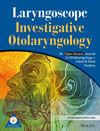Seasonal variation in peripheral vestibular disorders based on Korean population data
Abstract
Objectives
Comprehensive studies in which the seasonal variation in peripheral vestibular disorders was evaluated using data from an entire population are insufficient. The seasonal variation in peripheral vestibular disorders based on data from the entire Korean population was investigated in the present study.
Methods
Retrospective data from the National Health Insurance Service of Korea from 2008 to 2020 was analyzed. Benign paroxysmal positional vertigo (BPPV), vestibular neuritis (VN), and Meniere's disease (MD) were defined based on diagnostic, treatment, or audiovestibular test codes. The seasonal incidence for each peripheral vestibular disorder was calculated among all study subjects.
Results
For the entire study cohort, the incidence of BPPV was significantly higher in spring (odds ratio [OR] = 1.031, 95% confidence interval [CI] = 1.026–1.037), autumn (OR = 1.024, 95% CI = 1.019–1.029), and winter (OR = 1.051, 95% CI = 1.046–1.056) than in summer. The incidence of VN was significantly lower in winter (OR = 0.917, 95% CI = 0.907–0.927) than in summer. The incidence of MD was significantly higher in spring (OR = 1.027, 95% CI = 1.015–1.039) and autumn (OR = 1.029, 95% CI = 1.017–1.041) and significantly lower in winter (OR = 0.919, 95% CI = 0.908–0.931) than in summer. Differences were also observed in seasonal variation based on sex and age.
Conclusions
Significant seasonal variation occurred in peripheral vestibular disorders including BPPV, VN, and MD based on the entire Korean population data. Furthermore, seasonal variation showed differences based on sex and age.
Level of Evidence
4.

 求助内容:
求助内容: 应助结果提醒方式:
应助结果提醒方式:


